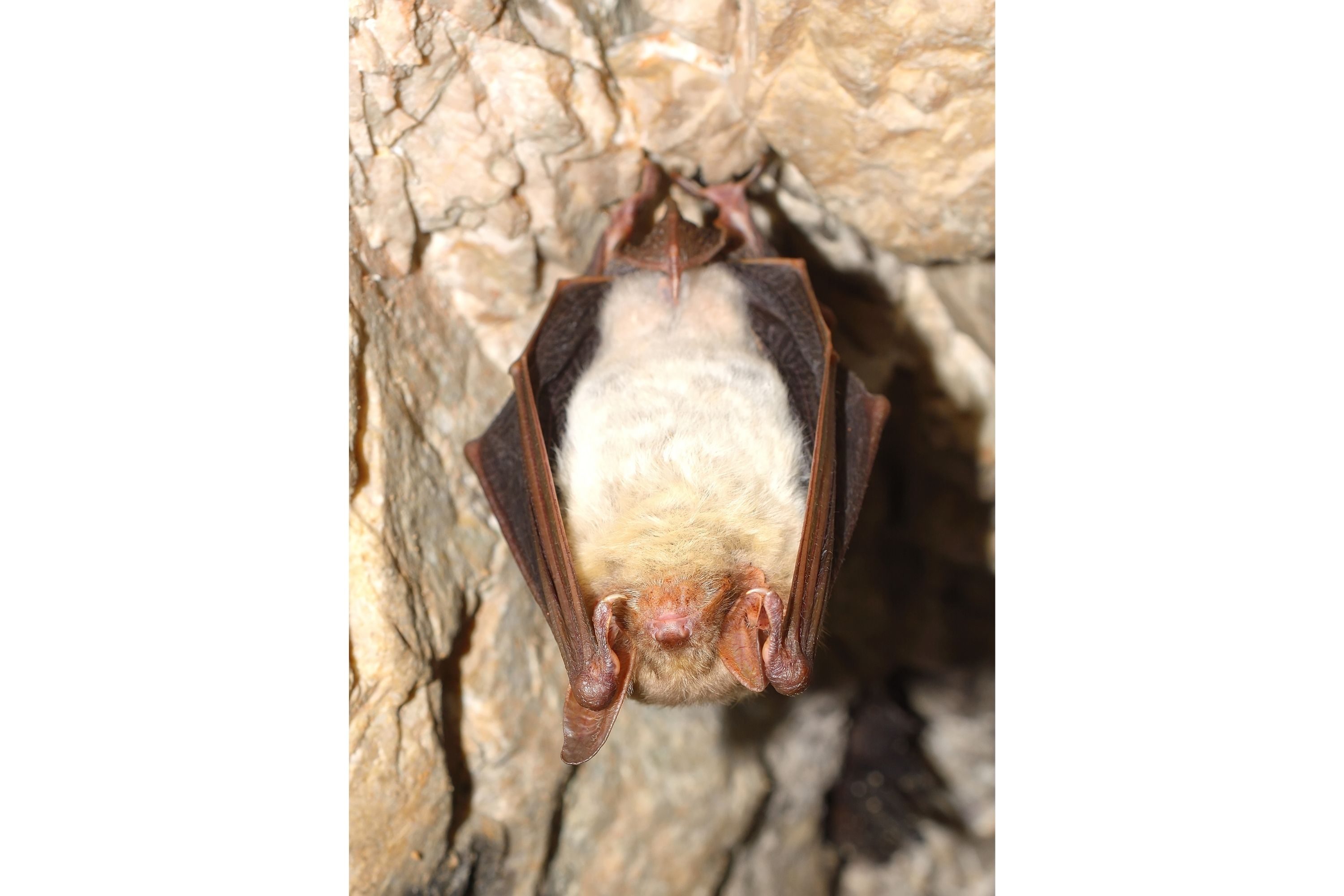Indiana bat
(Myotis sodalis)

Description
The Indiana bat (Myotis sodalis) is a medium-sized mouse-eared bat native to North America. It lives primarily in Southern and Midwestern U.S. states and is listed as an endangered species. The Indiana bat is gray, black, or chestnut in color and is 1.2-2.0 in long and weighs 4.5-9.5 g (0.16-0.34 oz). It is similar in appearance to the more common little brown bat, but is distinguished by its feet size, toe hair length, pink lips, and a keel on the calcar. Indiana bats live in hardwood and hardwood-pine forests. It is common in old-growth forest and in agricultural land, mainly in forest, crop fields, and grasslands. As an insectivore, the bat eats both terrestrial and aquatic flying insects, such as moths, beetles, mosquitoes, and midges. The Indiana bat is listed as an endangered species by the U.S. Fish and Wildlife Service. It has had serious population decline, estimated to be more than 50% over the past 10 years, based on direct observation and a decline on its extent of occurrence. The length of the Indiana bat's head to the body is from 4.1 to 4.9 cm. The animal weighs about 8 g (.25 ounce). These bats are very difficult to distinguish from other species, especially the more common little brown bat (Myotis lucifugus), unless examined closely. The size of the feet, the length of the toe hairs, and the presence of a keel on the calcar are characteristics used to differentiate the Indiana bat from other bats. Indiana bats typically live 5 to 9 years, but some have reached 12 years of age. They can have fur from black to chestnut with a light gray to cinnamon belly. Unlike other common bats with brown hair and black lips, Indiana bats have brown hair and pink lips, which is helpful for identification. Indiana bats spend the summer living throughout the eastern United States. During winter, however, they cluster together and hibernate in only a few caves. Since about 1975, their population has declined by about 50%. Based on a 1985 census of hibernating bats, the Indiana bat population is estimated around 244,000. About 23% of these bats hibernate in caves in Indiana. The Indiana bat lives in caves only in winter; but, there are few caves that provide the conditions necessary for hibernation. Stable, low temperatures are required to allow the bats to reduce their metabolic rates and conserve fat reserves. These bats hibernate in large, tight clusters which may contain thousands of individuals.
Taxonomic tree:







